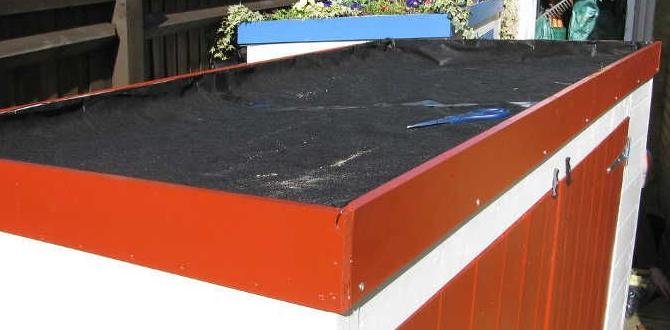Welcome to my comprehensive guide on the best landscape fabric types and how to use them effectively. If you want to keep your garden beds and outdoor areas weed-free and well-maintained, landscape fabric is a must-have. It acts as a barrier between your soil and the external elements, preventing weed growth and promoting healthy plant growth.
Benefits of Using Landscape Fabric
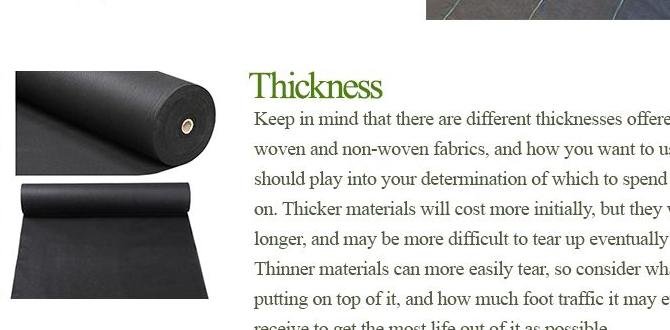
Landscape fabric offers several benefits that make it a valuable addition to any garden or outdoor space. Here are a few advantages of using landscape fabric:
- Weed control: Landscape fabric prevents weeds from growing by blocking sunlight and providing a physical barrier.
- Moisture retention: It helps retain moisture in the soil, reducing the frequency of watering.
- Improved plant growth: Landscape fabric promotes proper root development and protects plants from soil erosion.
- Prevents soil compaction: By inhibiting weed growth, landscape fabric prevents soil compaction caused by unnecessary foot traffic.
Different Types of Landscape Fabric
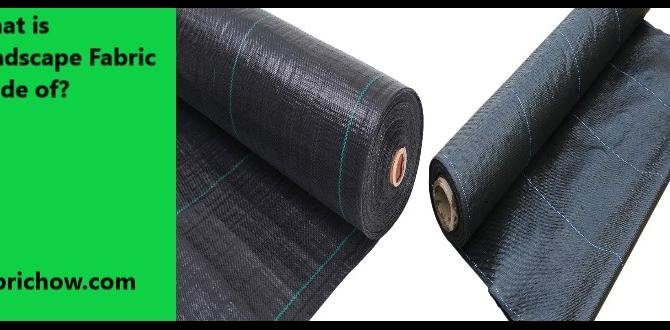
There are several types of landscape fabric available in the market, each with its unique features and benefits. Understanding the different types can help you choose the most suitable one for your landscaping needs. Let’s explore the most common landscape fabric types:
1. Woven Landscape Fabric
Woven landscape fabric is made from tightly woven polypropylene material. It is highly durable and offers excellent weed control. The woven structure allows water and nutrients to penetrate the soil while blocking weed growth. Woven landscape fabric is ideal for heavy-duty applications and long-term landscaping projects.
2. Non-Woven Landscape Fabric
Non-woven landscape fabric is made from synthetic fibers that are bonded together. It is lightweight, easy to handle, and offers good weed control. Non-woven fabric allows water and air to pass through while providing a barrier against weed growth. It is suitable for temporary or short-term landscaping projects.
3. Weed Barrier Landscape Fabric
Weed barrier landscape fabric is designed specifically for weed control. It is typically made from durable materials that block sunlight and inhibit weed germination. Weed barrier fabric is available in both woven and non-woven varieties. It is an excellent choice for areas prone to weed growth.
4. Biodegradable Landscape Fabric
Biodegradable landscape fabric is an environmentally friendly option. It is made from natural materials that break down over time, enriching the soil with organic matter. Biodegradable fabric is suitable for organic gardening and can be tilled into the soil after use.
How to Choose the Right Landscape Fabric
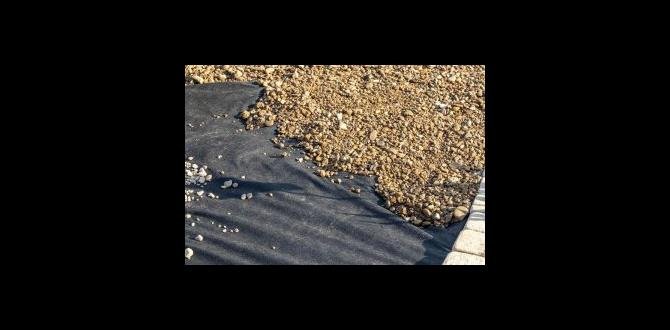
Choosing the right landscape fabric involves considering several factors to ensure its effectiveness. Here are some key points to keep in mind when selecting the best landscape fabric for your project:
- Soil type: Different fabric types work better with specific soil types. Consider the composition and drainage capabilities of your soil before making a choice.
- Water permeability: Ensure the fabric allows proper water penetration to prevent pooling and soil saturation.
- Durability: Choose a fabric that suits the longevity of your project. Heavy-duty fabrics are suitable for long-term applications, while lightweight options are ideal for temporary projects.
- Compatibility with plants: Some fabrics may hinder the growth of certain plants. Consider the plants you intend to grow and choose a fabric that allows their root systems to thrive.
Steps to Properly Install Landscape Fabric
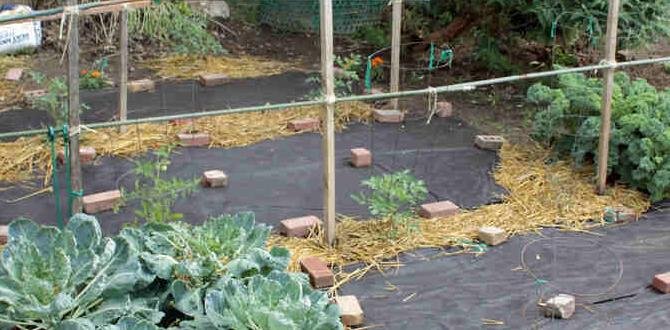
To ensure the optimal performance of your landscape fabric, follow these steps for proper installation:
- Prepare the area by clearing it of any existing weeds, rocks, or debris.
- Smooth out the soil and create a level surface.
- Measure the area and cut the landscape fabric according to the dimensions needed.
- Lay the fabric over the prepared soil, ensuring it covers the entire area.
- Secure the fabric with landscape fabric pins or staples to keep it in place.
- Overlap the fabric edges to prevent weed growth at the seams.
- Trim the excess fabric and make necessary adjustments to ensure a snug fit.
- Finally, cover the fabric with a layer of mulch or decorative stones to enhance its appearance.
Maintenance Tips for Landscape Fabric
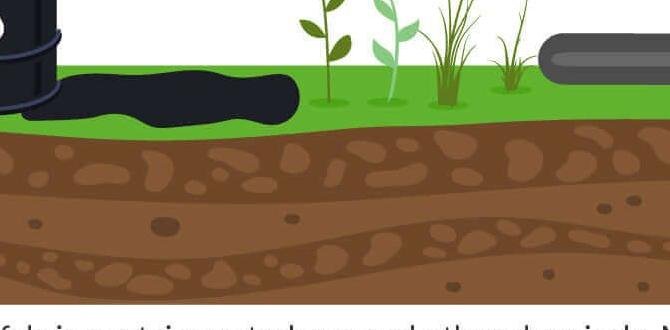
Proper maintenance is essential to keep your landscape fabric in good condition and ensure its long-term effectiveness. Here are some maintenance tips to follow:
- Regularly inspect the fabric for any signs of damage or weed growth.
- Remove any weeds or debris that may accumulate on the fabric surface.
- Reapply mulch or decorative stones as needed to maintain an even surface.
- Inspect the fabric pins or staples and replace any that may have come loose or rusted.
Common Mistakes to Avoid When Using Landscape Fabric
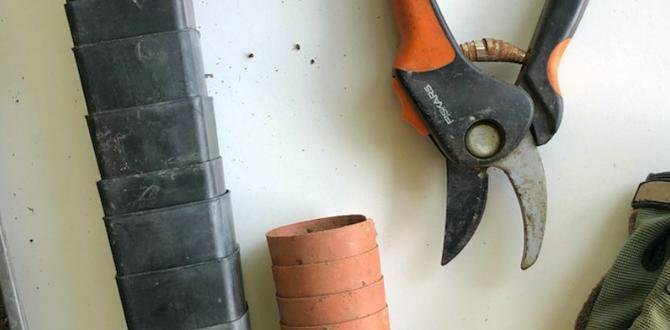
While landscape fabric can be highly beneficial, there are some common mistakes to avoid to ensure its optimal performance:
- Avoid overlapping the fabric incorrectly, as it may create gaps for weed growth.
- Do not leave gaps along the edges, as weeds can easily penetrate these areas.
- Do not rely solely on landscape fabric for weed control. Regular weeding is still necessary.
- Avoid using landscape fabric in areas with existing perennial weeds, as they may grow through the fabric.
Cost and Durability Comparison of Landscape Fabric Types
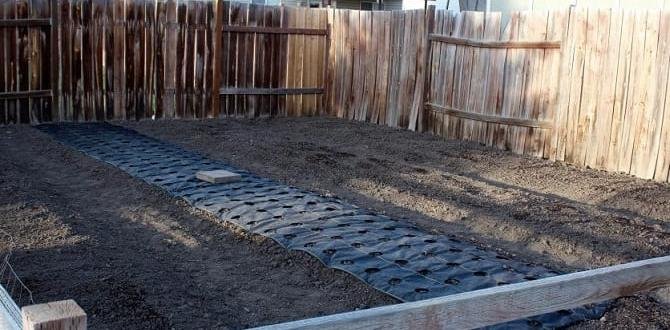
The cost and durability of landscape fabric may vary based on the type and brand. Generally, woven landscape fabric tends to be more expensive but offers higher durability for long-term projects. Non-woven fabric is more affordable and suitable for temporary applications. Biodegradable fabric may have a higher cost but offers environmental benefits.
Best Landscape Fabric Types
Product Comparison Table
Here’s a quick overview of the top 5 landscape fabric types:
| Product Name | Amazon Rating | Price on Amazon |
|---|---|---|
| ECOgardener Landscape Fabric | 4.5/5 | $19.99 |
| DeWitt Sunbelt Woven Ground Cover | 4.6/5 | $29.95 |
| Agfabric Landscape Ground Cover | 4.4/5 | $26.59 |
| Dewitt P5 Pro 5 Landscape Fabric | 4.7/5 | $31.95 |
| AHSG Premium Landscape Fabric | 4.8/5 | $36.99 |
ECOgardener Landscape Fabric
Features That Matter
Durability: ECOgardener Landscape Fabric boasts exceptional durability, designed to withstand the harshest weather conditions. Made from premium materials, it’s tear-resistant and built to last.
Weed Control: Say goodbye to invasive weeds! This fabric effectively blocks weeds, reducing the need for harmful chemicals. Your garden will remain pristine and free from unwanted greenery.
Easy Installation: Installing this fabric is a breeze, even for beginners. With clear instructions and manageable weight, you can have it in place in no time.
UV Protection: Worried about sun damage? ECOgardener’s UV protection ensures the fabric won’t deteriorate under the sun’s harsh rays.
Analysis
While ECOgardener Landscape Fabric offers excellent weed control and durability, some users have mentioned that it may not be the best choice for extremely heavy-duty applications. For most gardeners, however, it strikes a perfect balance between quality and affordability.
Pros:
- Durable and tear-resistant
- Effective weed control
- Easy to install
- UV protection
Cons:
- Not ideal for heavy-duty applications
DeWitt Sunbelt Woven Ground Cover
Features That Matter
High-Quality Material: DeWitt Sunbelt is made from woven polypropylene, known for its strength and longevity. It can handle heavy foot traffic without tearing.
Water Permeability: This fabric allows water to penetrate while blocking weeds, ensuring your plants get the hydration they need.
UV Resistant: It’s designed to withstand prolonged sun exposure without degrading, making it perfect for outdoor use.
Multiple Sizes: DeWitt offers a variety of sizes to suit your garden’s needs, making it versatile for different projects.
Analysis
DeWitt Sunbelt Woven Ground Cover is a premium choice, offering exceptional durability and water permeability. However, some users may find the price point a bit higher than other options.
Pros:
- High-quality woven polypropylene
- Water permeable
- UV resistant
- Available in various sizes
Cons:
- Slightly higher price
Agfabric Landscape Ground Cover
Features That Matter
Weed Barrier: Agfabric’s landscape fabric is designed with a superior weed barrier, keeping your garden weed-free and reducing the need for constant maintenance.
Erosion Control: It not only prevents weed growth but also helps control erosion, making it ideal for sloped areas.
Eco-Friendly: Made from environmentally friendly materials, this fabric is safe for plants and the ecosystem.
Customizable: Agfabric comes in various widths, allowing you to customize it to your garden’s dimensions.
Analysis
Agfabric Landscape Ground Cover is an excellent choice for those looking to control erosion while keeping weeds at bay. However, some users have reported that it may require extra anchoring in windy conditions.
Pros:
- Effective weed barrier
- Erosion control
- Eco-friendly materials
- Customizable widths
Cons:
- May need additional anchoring in windy conditions
Dewitt P5 Pro 5 Landscape Fabric
Features That Matter
Heavy-Duty: If you need a landscape fabric for the toughest jobs, Dewitt P5 Pro 5 is the answer. It’s designed to handle heavy machinery and foot traffic with ease.
Permeable: Despite its robustness, this fabric allows water and air to pass through, promoting healthy plant growth.
Longevity: You won’t have to replace this fabric often. Its durability ensures it remains in top condition for years to come.
UV-Stabilized: Dewitt P5 Pro 5 is UV-stabilized, preventing degradation from sun exposure.
Analysis
For heavy-duty applications, Dewitt P5 Pro 5 Landscape Fabric is unmatched in performance. However, it might be overkill for smaller garden projects, both in terms of price and thickness.
Pros:
- Heavy-duty construction
- Water and air permeable
- Long-lasting
- UV-stabilized
Cons:
- Overkill for smaller projects
AHSG Premium Landscape Fabric
Features That Matter
Premium Quality: AHSG Premium Landscape Fabric stands out for its premium quality, ensuring your garden is protected for years to come.
Weed Control: It effectively suppresses weeds, keeping your garden low-maintenance and looking pristine.
Easy Installation: With clear instructions and manageable weight, AHSG is user-friendly, even for beginners.
UV Resistant: The fabric is UV resistant, so you won’t have to worry about it deteriorating under the sun.
Analysis
AHSG Premium Landscape Fabric is an excellent all-around choice, combining quality, ease of use, and affordability. However, for extremely heavy-duty applications, you may want to consider a thicker option.
Pros:
- Premium quality
- Effective weed control
- Easy installation
- UV resistant
Cons:
- Not suitable for extremely heavy-duty applications
Summary
In conclusion, the right landscape fabric can significantly impact the success of your gardening projects. Each of the top 5 options we’ve explored here has its own unique strengths and caters to different needs. Whether you’re looking for durability, weed control, or eco-friendliness, there’s a landscape fabric that suits your garden perfectly.
Remember to consider your specific requirements and budget when making your selection. Happy gardening!
FAQs
1. Can I reuse landscape fabric?
Landscape fabric can be reused if it is in good condition. Inspect the fabric for any damage or weed growth before reusing it. If it is intact and clean, you can reinstall it in a new area.
2. How often should I replace landscape fabric?
The lifespan of landscape fabric depends on various factors such as the type of fabric, weather conditions, and maintenance. On average, landscape fabric can last for several years before requiring replacement.
3. Can I plant directly into landscape fabric?
While it is possible to plant directly into landscape fabric, it is generally recommended to cut slits or holes in the fabric to allow plants to establish their root systems in the underlying soil.
4. Can I use landscape fabric in vegetable gardens?
Landscape fabric can be used in vegetable gardens, especially in areas where weed control is a challenge. However, ensure that the fabric is permeable and allows proper water and nutrient flow to support healthy vegetable growth.
5. Is landscape fabric necessary for raised beds?
Landscape fabric is not necessary for raised beds as long as the beds are adequately filled with clean soil or compost. However, using landscape fabric as a weed barrier can be beneficial, particularly if the soil used contains weed seeds or if weeds are a persistent problem in your area.
